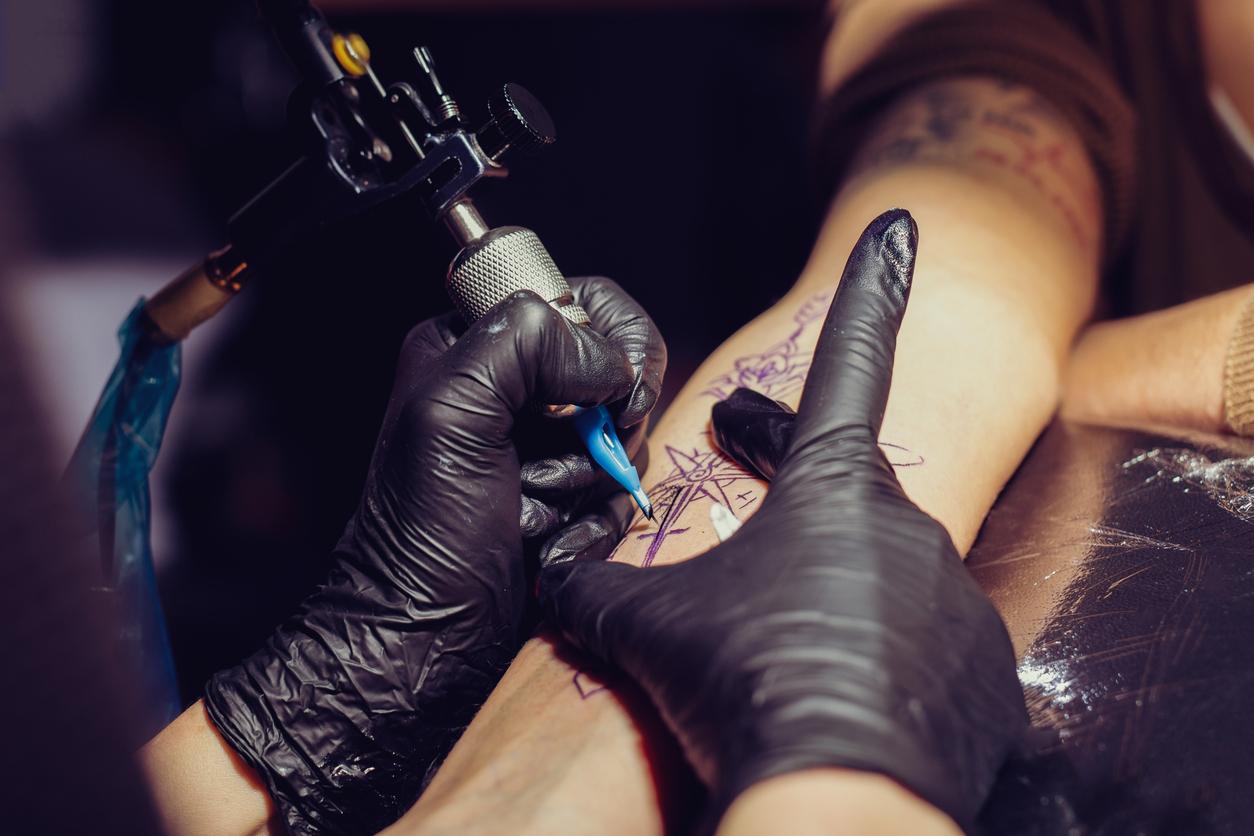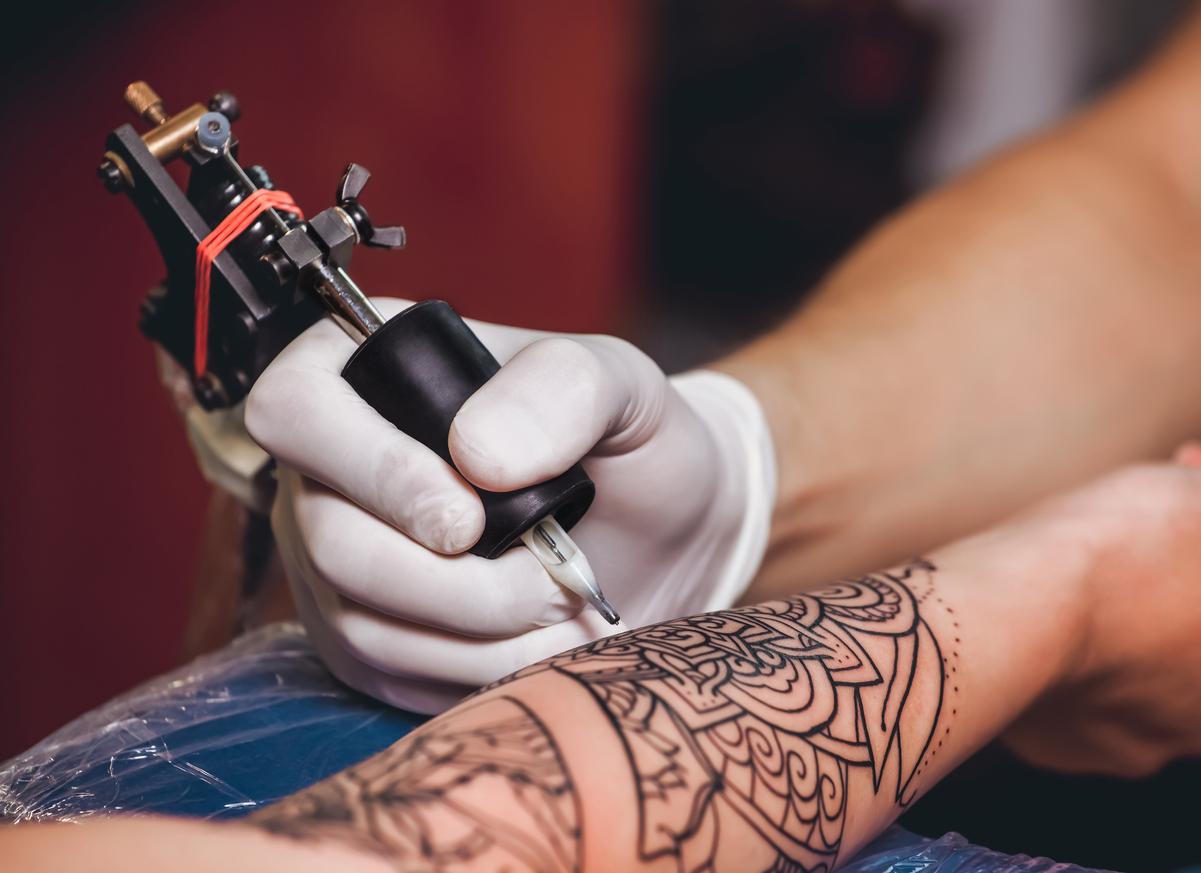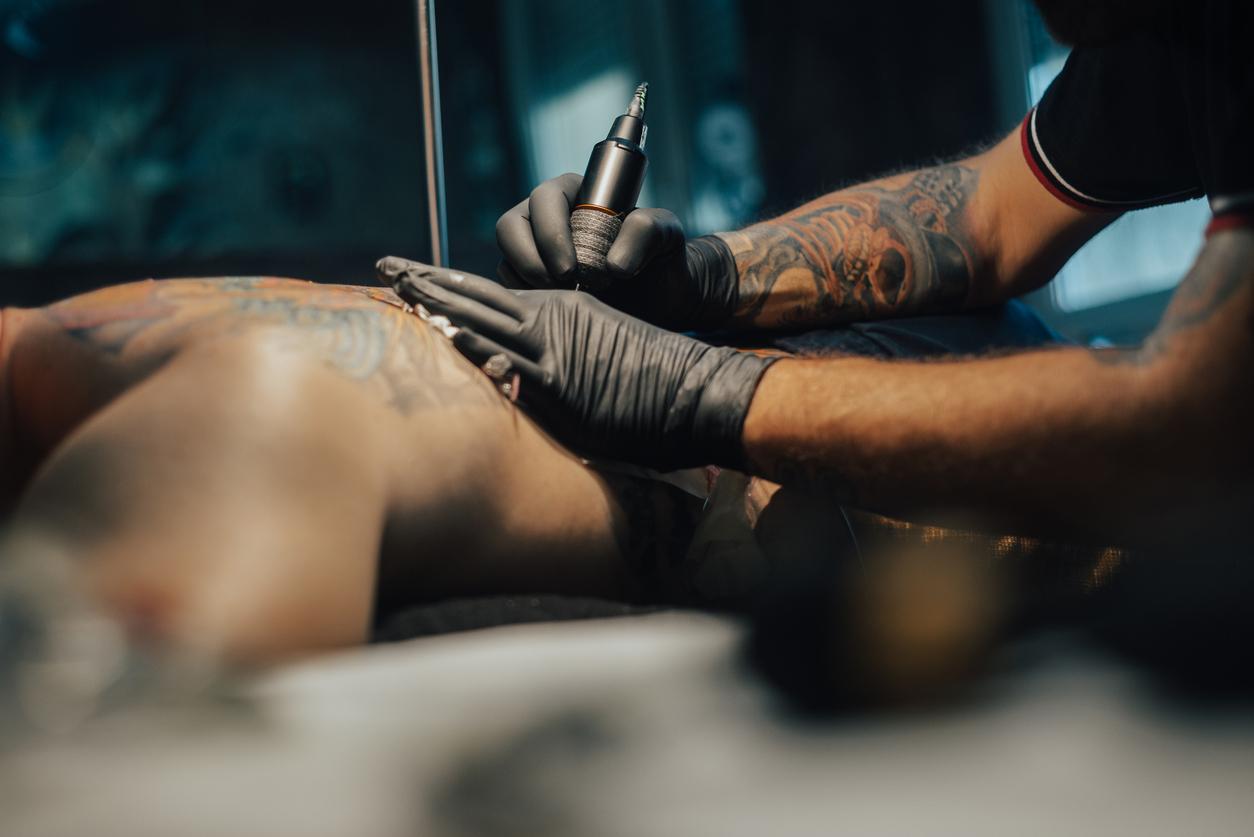According to a 2018 Ifop study, 29% of people under 35 have tattoos. While it was once linked to religious practice or group membership, the tattoo has clearly become a fashion accessory.
Also, “the more people tattooed, the greater the demand for tattoo removal”, explains Dr. Jordan Gendre, medical director of Ray Studios. For those who come to regret their tattoo today, it is possible to erase it completely, provided they take their pain (sometimes literally and figuratively) with patience.
Sometimes tattoo removal does not work seamlessly. In some cases, the skin becomes stained with depigmented scars which reveal the phantom shape of the erased tattoo.
Reasons for tattoo removal
The regret of the choice: “If the average age of people having a tattoo removed is around 32, you can also come across older people who no longer agree with their youthful tattoo (dolphin, slogan, etc.) or who don’t like it. ‘assume more on skin that has lost its elasticity,’ explains Dr Gendre.
He has aged badly: As it is on a living material, a tattoo moves over time, especially if you don’t take care of it (hydration, SPF 50 sun protection at each exposure…): it loses intensity, it can smudge… We think less about it, but this problem also concerns an entire population, especially older women, who have had recourse to permanent make-up (freckles, eyebrows, liner or lip contour, etc.) and wish to have the remains of pigments embedded in the skin, which have often aged very badly. In some cases, it is possible to repigment a tattoo.
Life has destroyed my tattoo: It happens that the vagaries of existence have repercussions on the body, and in particular on a tattoo: pregnancy which greatly stretches the skin or creates stretch marks, cesarean section, operation or accident generating a scar… In some cases, the tattoo being altered and not always recoverable by a pro, the only possibility is to erase it.
Techniques for erasing a tattoo
Recovery : In the jargon of the pros, this is called the cover, or covering. This consists of covering up a tattoo that you no longer want with a new one.
How it works ? Depending on the size of the original tattoo and the amount of ink used, it may be necessary to make a very large tattoo to camouflage it, or go through laser sessions beforehand to reduce the intensity. Indeed, not everyone wants to end up with a cover, some parts of which are completely colored with ink to hide a previous tattoo.
The tattoo removal laser: Different lasers followed one another (the Q-switched nanosecond, the PicoSure pro picosecond, from Cynosure, the PicoWay, etc.), with varying efficiencies and sensations. The latest generation – Discovery Pico – delivers ultra-short pulses twice as high as a conventional laser, adapting to the type of skin, depth and pigment of the tattoo, avoiding the risk of hypopigmentation and the skin atrophy.
How it works ? “These lasers very finely fragment the ink located in the dermis, so that it is eliminated in the lymphatic circulation,” explains Dr. Gendre.
What to expect ? “The more colorful the tattoo, the longer it will take to erase,” warns Dr. Gendre. The number of sessions required – which varies according to the areas treated, the phototype and the intensity of the tattoo – is assessed during the first meeting with the doctor, who studies the patient’s medical history and his tattoo. Each session is spaced about two months apart and it is possible to start immediately, without a mandatory reflection period as in medicine and cosmetic surgery.
Count three to five sessions to eliminate dermopigmentation or microblending; between five and ten sessions for a tattooknowing that, very often, the price is calculated according to the size of the area.
After the session, “it is recommended to apply a healing cream for ten days, not to expose yourself to the sun, but also to avoid swimming in the pool or sea, the sauna or hammam and the practice of a sport. which generates friction or makes you sweat too much, ”advises Dr Gendre.
To accelerate healing, some centers use Ray Spark, a hydraulic acoustic wave technology that reduces inflammatory reactions (blisters, bleeding, etc.).
Ablative laser, or surgical removal: These techniques are rarely used by doctors, and for good reason: they are painful, very expensive and their risk of scarring is high.
One of them consists in incising the tattooed skin, then to sew it up, thus leaving a small mark. It is also possible to perform a skin graft covering the tattoo, but creating a volume on the skin. Finally, the so-called ablative CO2 laser, whose short wavelength (10,600 nm) hardly reaches the dermis, and touches the epidermis in the process.
In other words, it somehow eliminates the ink under the skin, but, in addition, it also destroys the skin, which must be rebuilt afterwards!
What are the limits of tattoo removal?
Not all tattoos come off the same way. Indeed, “the bigger and more colorful the drawing, the more complicated the operation will be; white, purple and yellow are thus difficult to eliminate”, specifies Dr. Bernard Sillam, founder of the Lazeo centers. It must be said that before the creation of strict regulations at French (May 2013) and European (January 2022) level, the legislation was vague on the use of inks, and the work of doctors in terms of tattoo removal could prove to be particularly complex. “When the skin is too stretched, the tattoo removal work can also take longer,” adds Dr. Gendre. The latter therefore advises to use combined lasers beforehand in order to firm up the epidermis, then to erase the tattoo in stages.
Is tattoo removal painful?
It is said that tattoo removal is painful. Some would say worse than a tattoo session itself. “While most practitioners apply an anesthetic cream and double the laser with a jet of soothing pulsed cold air, others favor the comfort of their patient, even if it means spending more time there, and anesthetize the area with a syringe. says Dr. Sillam, founder of the Lazeo centers.
Acid tattoo removal: beware, danger!
“Do not be fooled by the enticing and misleading claims of lactic acid tattoo removal practiced in beauty salons or sold on the Internet”, warns Dr. Gendre. This technique is certainly quick and less expensive, but it can cause burns and irreversible sequelae on the skin.
However, despite recommendations from the High Council for Public Health in a December 2020 report, the practice is still very much in vogue. The laser is also the only technique recognized by Social Security.


















